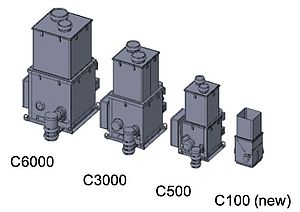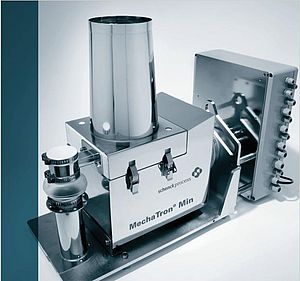The production of lithium-ion batteries is complex. To ensure a high-performance, high-quality product, contamination of the slurry by metallic abrasion and the ingress of air and moisture must be avoided. At the same time, maximum feeding accuracy under challenging pressure conditions and a reliable containment concept are required. The new CS+ loss-in-weight feeder system from Schenck Process perfectly meets these different requirements.
Practical design for individual requirements
CS+ can be customized to meet individual customer requirements. The modular design makes it possible to cover a large feeding range with just one feeder type: CS+ is suitable for small quantities from 30 litres per hour as well as for high feeding capacities of up to 3,000 litres per hour. Schenck Process has placed particular emphasis on avoiding product contamination in the new development. To prevent metal-to-metal contact, components can be optionally coated. Smooth surfaces and limited relative speeds of the agitator and screw minimize metal abrasion. The patented design of the CS+ combines this with a quick-acting flap that prevents material from trickling out during the batch process.
The CS+ loss-in-weight feeder system also offers the user permanently high accuracy for consistently high product quality. Intelligent pressure management prevents the ingress of ambient air and moisture. This prevents pressure fluctuations from having a negative impact on the dosing accuracy. At the same time, the system impresses with its simple and practical design, which also allows several dosing units to be installed in the smallest of spaces. Last but not least, CS+ fits seamlessly into system concepts that rely on a consistent containment concept to limit dust emissions. The system complies with OEB class 4 and therefore minimizes the risk for users during production.





















